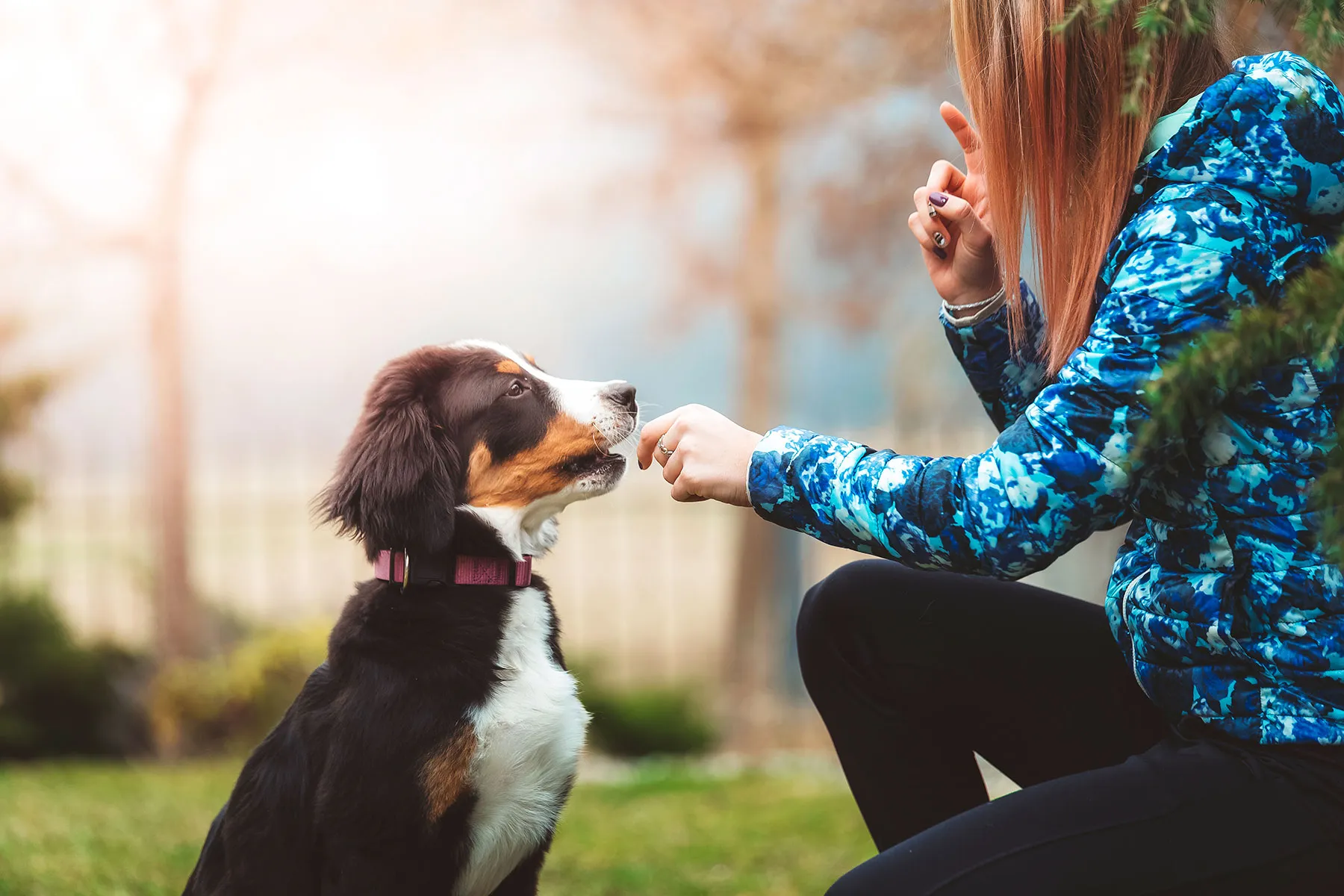A well-trained pet is a happy pet. Training your dog or cat can give them confidence, help them feel comfortable in different situations, and create a strong bond with you.
“I’m the proud mom of a gorgeous American bulldog named Ruby,” says Steph Boll, who lives in Portland, OR. “I knew she needed an active, structured, disciplined lifestyle to thrive.” Boll, who edits a fitness blog for women called Spikes and Heels, enrolled Ruby in an 8-week obedience training class.
Ruby learned basic commands like sit, stay, hold, and fetch, how to walk properly on a leash, and how to socialize with other dogs. Training also strengthened their bond. “My pup and I have grown so much closer since taking her to training,” Boll says.
Getting Started
Whether you want to teach a new puppy basic commands, socialize or exercise your dog, or find help with a behavior problem, you have many options and can start early.
“Many pet owners don’t realize they can start training their dog or cat when they arrive home,” says Michelle Burch, DVM, a veterinarian with Safe Hounds Pet Insurance in Decatur, AL. That’s usually around 8 weeks for puppies. You can train kittens as young as 4 weeks, even if they’re still with their mother.
You can choose group classes, private lessons, or day training.
Group classes. Group training is good for pets that need help with basic manners and skills. Many groups cater to young puppies and teach basic commands like sit, down, and come. They’re also good for pets who need socialization, including young puppies.
Private sessions. If your dog or cat needs more specialized training, you may want to try one-on-one classes. They’ll get more attention from a trainer and they can work on specific obedience behaviors. If your pet has a behavior problem, private sessions are usually best.
Day training. Some trainers offer private lessons at their facility or at your house, where you’re not involved. They come to your home when you’re at work, or you drop your pet off at their facility for a long period of time. They do the training, then you follow up by learning the skills yourself and practicing them with your dog.
Group classes are good for teaching and socializing your dog in a supervised setting, says Morgan Rivera, a certified placement and transport coordinator for the Humane Society of the United States Animal Rescue Team in Gaithersburg, MD. But they tend to be less advanced if you’re looking to teach your dog more than the basics.
“One-on-one training can be excellent for developing or deepening the bond you have with your dog and also working on more complex behaviors,” Rivera says. But unlike groups, they don’t help dogs develop social skills that help them thrive in their communities.
DIY Training Videos
You can try training your dog using online resources like YouTube videos.
“YouTube videos can be a good source of information for basic training commands for your puppy,” Burch says. Seeing techniques onscreen may help you visualize how to handle your puppy. You can do it in the comfort of your own home, and it may save you money. “You also reduce the risk of your puppy picking up an illness before being fully vaccinated,” Burch says.
But take care in choosing the right videos. “You may run into some videos that give inadequate or inappropriate advice,” Burch says. Avoid videos that promote negative reinforcement or use punishment as a training method.
A downside of DIY training is that your puppy will miss out on socialization with other animals, people, and environments.
Agility Classes
If your dog is young or high energy, you may want to try agility training.
“Agility classes provide incredible mental and physical stimulation,” Rivera says. “They also allow your dog to perform enriching behaviors they may not be able to perform in other environments, like running, chasing, jumping, and climbing.”
Agility training is a good outlet for your dog’s energy, builds the bond between you and your dog, and gets you both outside and active.
Behavior Problems
If your dog has behavior problems like barking too much, inappropriate peeing or pooping, over-grooming, and repetitive behaviors, one-on-one behavior training with a qualified professional may help.
“Behavior consultants can be very helpful if your dog is struggling with anything from serious fears and phobias to everyday stress and anxiety,” Rivera says.
One-on-one sessions with a qualified veterinarian behaviorist or certified behavior consultant may be best.
“Veterinary behaviorists have in-depth knowledge of all aspects of animal behavior,” Burch says. They’ve also completed extra training and stay current with the most up-to-date scientific findings for the best treatment for your dog.
To find a qualified specialist, ask your primary veterinarian for recommendations or visit an organization like the American College of Veterinary Behaviorists or the International Association of Animal Behavior Consultants.
Cat Training
“Cats are largely ignored when it comes to training, but they can be taught just as dogs can,” says Joanna Woodnutt, head veterinarian for the blog BreedAdvisor.com. Woodnutt taught her foster cat to sit on command, raise a paw, and spin, which she says helped him find a new home.
A cat trainer may help you with basic commands like follow you, respond to their name, fetch, or even use a human toilet, says Lucie Wilkins, a veterinary nurse near London, England, and cat blogger for KittyCatTree.com. Training can also help to stop behaviors like furniture scratching, jumping up where they shouldn’t be, and biting.
Cats often do best in a one-on-one training situation. To find a trainer, talk to your veterinarian.
https://img.webmd.com/dtmcms/live/webmd/consumer_assets/site_images/article_thumbnails/features/_2021/07_2021/training_classes_for_every_need_features/1800x1200_getty_rf_training_classes_for_every_need_features.jpg
2023-03-16 18:11:48





